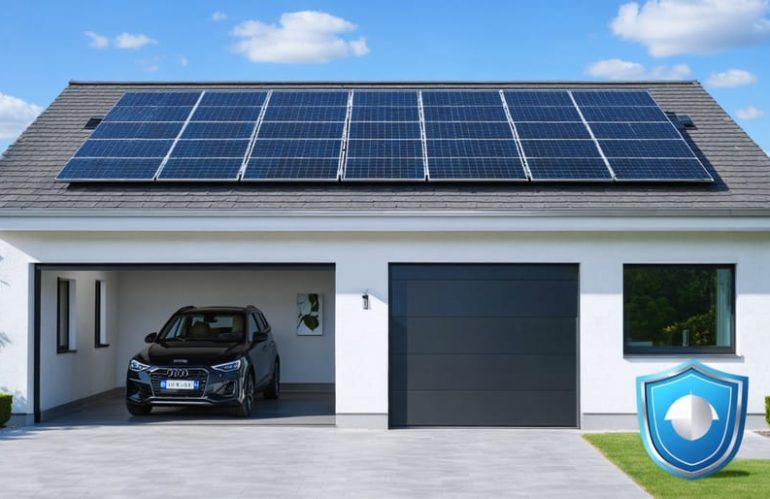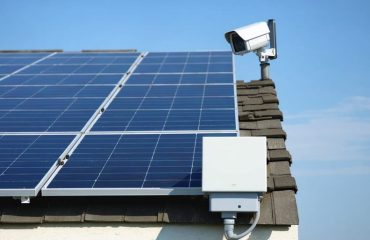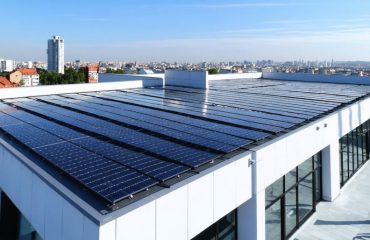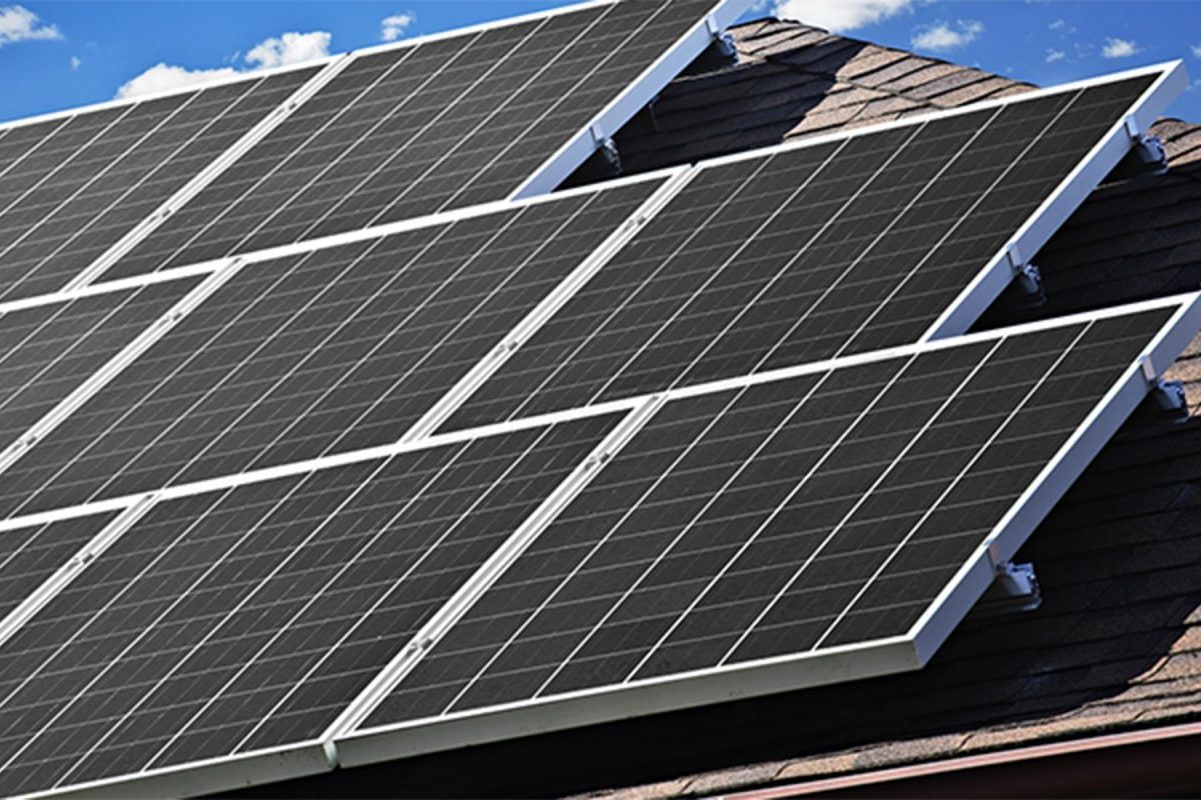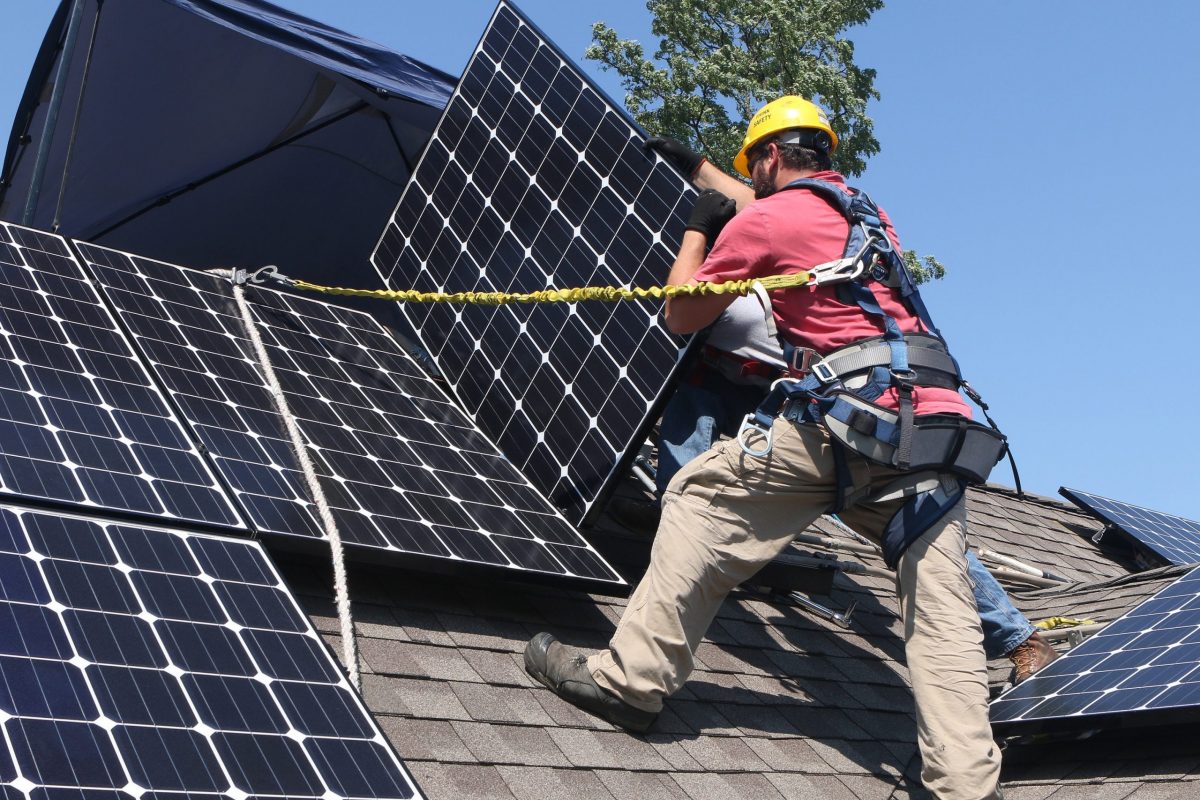Solar battery storage revolutionizes how homeowners harness and utilize clean energy, offering a powerful solution to rising electricity costs and grid independence. By capturing excess solar power during peak production hours, these advanced systems enable households to maintain reliable power even after sunset or during grid outages. Modern solar batteries transform the traditional one-way energy relationship into an intelligent, self-sustaining ecosystem that maximizes every ray of sunshine.
Beyond immediate cost savings, solar battery storage provides crucial backup power during emergencies, stabilizes local power grids, and significantly reduces carbon footprints. Homeowners can now take control of their energy destiny, selling excess power back to utilities while protecting themselves against rising electricity rates and unpredictable outages. As technology advances and prices continue to fall, solar battery storage represents not just an environmentally conscious choice, but a smart financial investment that pays dividends in both security and savings.
Key Benefits of Solar Battery Storage Systems
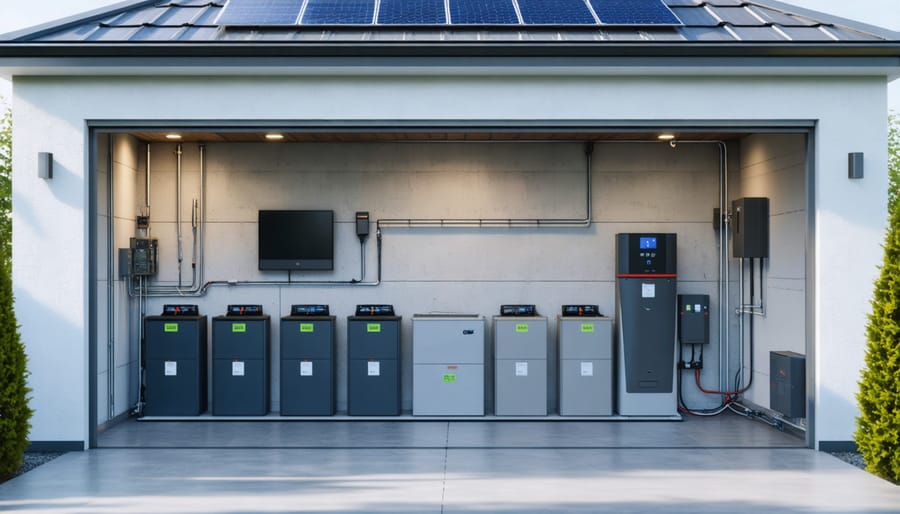
Energy Independence and Backup Power
Solar battery storage transforms your home into an energy-independent sanctuary, especially during power outages. When the grid goes down, your battery system automatically kicks in, providing seamless backup power to keep essential appliances running. Unlike traditional generators, solar batteries operate silently and don’t require fuel, offering reliable power during storms, maintenance outages, or unexpected blackouts.
With a properly sized battery system, you can power your refrigerator, lights, medical equipment, and other crucial devices for hours or even days. This self-reliance means you’re no longer at the mercy of utility companies or grid failures. Plus, you’ll have peace of mind knowing your home remains functional and comfortable, regardless of external power conditions.
The backup power capability is particularly valuable in areas prone to severe weather or aging power infrastructure, making solar batteries an investment in both sustainability and security.
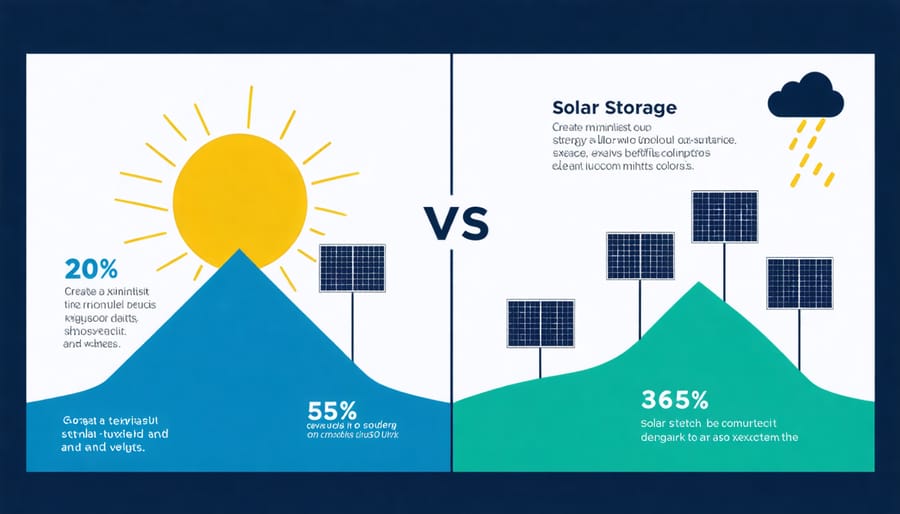
Financial Savings and Grid Benefits
Solar battery storage can significantly reduce your electricity bills through strategic energy management. By storing excess solar power during the day, you can use it during peak evening hours when grid electricity rates are highest, a practice known as peak load shifting. This smart approach to energy consumption can lead to substantial savings on your monthly utility bills.
Energy arbitrage offers another money-saving opportunity. You can charge your batteries when electricity rates are low and use the stored energy when rates are high. Many utility companies offer time-of-use rates, making this strategy particularly effective. Additionally, some regions provide financial incentives and rebates for installing battery storage systems, further improving your return on investment.
Beyond individual savings, battery storage helps stabilize the electrical grid during high-demand periods, potentially earning you credits through demand response programs. This grid support can translate into additional financial benefits while contributing to community energy resilience.
Environmental Impact
Solar battery storage systems significantly reduce your carbon footprint by maximizing the use of clean, renewable energy. When paired with solar panels, these batteries store excess solar power during sunny periods, reducing reliance on grid electricity that often comes from fossil fuels. This means fewer greenhouse gas emissions and a smaller environmental impact from your home’s energy consumption.
By optimizing renewable energy usage, battery storage helps overcome one of solar power’s biggest challenges: intermittency. Instead of sending excess solar energy back to the grid, you’re storing it for later use, making the most of every ray of sunshine. This improved efficiency means less waste and better utilization of clean energy resources. Additionally, widespread adoption of solar battery storage could lead to fewer power plants being needed, further reducing our collective environmental impact and supporting a more sustainable future.
Insurance Coverage Options for Solar Battery Storage
Homeowner’s Insurance Considerations
When installing a solar battery system, it’s crucial to understand its impact on homeowners insurance. Most standard policies will cover solar batteries as part of your home’s permanent electrical system, but coverage limits and terms can vary significantly between insurers.
Start by contacting your insurance provider to verify coverage for your solar battery installation. Some policies may require additional endorsements or riders to fully protect your investment. Key points to discuss include coverage for damage from natural disasters, electrical malfunctions, and theft.
Many insurance companies now offer specialized coverage options for renewable energy systems. These policies often provide better protection and may include coverage for lost income if your system malfunctions, preventing you from selling excess energy back to the grid.
When reviewing your policy, pay attention to:
– Coverage limits for renewable energy equipment
– Deductible amounts specific to solar components
– Requirements for professional installation and maintenance
– Protection against power surge damage
– Coverage for business use if you participate in net metering
Consider upgrading your coverage limits to match the value of your solar investment. While this might increase your premium slightly, the peace of mind knowing your sustainable energy system is fully protected makes it worthwhile. Remember to keep detailed records of your installation, maintenance, and any certifications, as these may be required for claims processing.
Specialized Coverage Requirements
When installing a solar battery system, it’s crucial to understand the specific battery storage insurance requirements that go beyond standard homeowner’s coverage. Most basic policies don’t adequately protect these sophisticated energy systems, making specialized coverage essential.
Look for policies that specifically cover:
– Fire damage related to battery malfunctions
– Lightning strikes and power surge protection
– Environmental damage from extreme weather
– Theft and vandalism of battery components
– Performance guarantee coverage
– Installation-related damages
Many insurance providers now offer renewable energy endorsements that can be added to existing homeowner’s policies. These endorsements typically include coverage for both the physical components and potential income loss from system downtime.
When selecting coverage, consider:
– The full replacement value of your battery system
– Business interruption coverage if you participate in grid services
– Warranty overlap to avoid duplicate coverage
– Liability protection for grid-connected systems
– Environmental cleanup coverage
It’s recommended to work with insurers who specialize in renewable energy systems, as they better understand the unique risks and requirements of solar battery storage. Some providers even offer discounts for systems with advanced safety features or professional monitoring services, making comprehensive coverage more affordable while ensuring complete protection for your investment.
Risk Factors and Protection Strategies
Common Risk Scenarios
While solar battery storage systems are generally reliable, it’s important to be aware of common risk scenarios to protect your investment. Weather-related incidents, such as lightning strikes or severe storms, can potentially damage both solar panels and battery units. Extreme temperatures, particularly prolonged exposure to heat, may affect battery performance and longevity if proper ventilation isn’t maintained.
Installation-related risks can occur if systems aren’t properly set up by qualified professionals. This includes incorrect wiring, inadequate mounting, or improper system integration, which could lead to reduced efficiency or safety concerns. Cyber security risks, while rare, exist in smart battery systems connected to home networks or monitoring applications.
Equipment failure, though uncommon in quality systems, can happen due to manufacturing defects or normal wear and tear over time. Battery degradation is a natural process, but it can accelerate if the system isn’t maintained according to manufacturer specifications. Fire risks, while extremely low in modern systems with built-in safety features, should be considered when planning installation locations and maintenance routines.
Regular maintenance and working with certified installers can significantly minimize these risks. Many manufacturers also offer warranties that cover potential defects and performance issues, providing additional peace of mind for homeowners investing in solar battery storage systems.
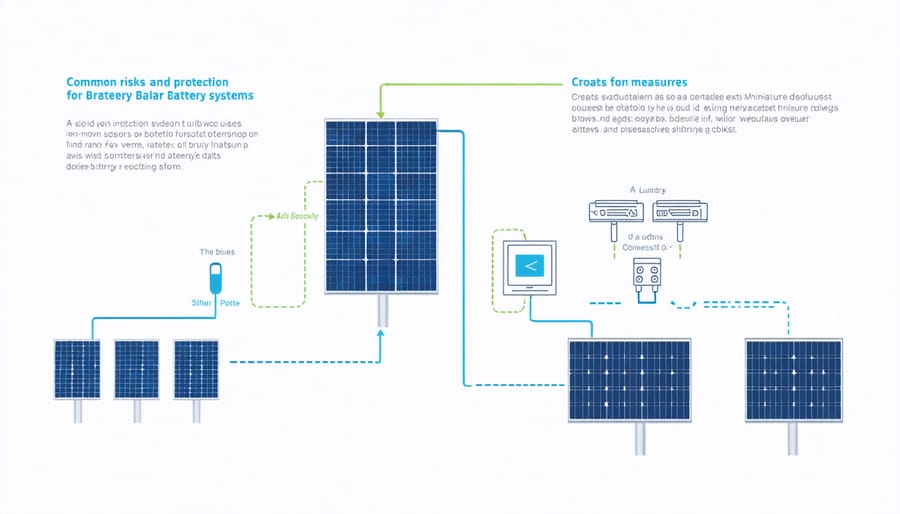
Preventive Measures and Best Practices
To maintain the safety and efficiency of your solar battery storage system, it’s essential to follow proper battery storage requirements and preventive measures. Install your batteries in a clean, dry, and temperature-controlled environment, ideally between 50-85°F (10-29°C). Ensure proper ventilation and keep the area free from flammable materials.
Regular maintenance checks are crucial for optimal performance. Schedule professional inspections at least once a year to verify system integrity and update software when available. Monitor your battery’s performance through the provided management system and address any unusual patterns promptly.
Install surge protection devices and ensure your system includes proper grounding. Keep detailed records of maintenance activities and any system modifications, as these may be required for warranty claims or insurance purposes.
Consider installing a battery monitoring system that alerts you to potential issues before they become serious problems. This proactive approach helps maintain system efficiency and extends battery life.
For outdoor installations, use appropriate weatherproof enclosures and ensure proper drainage around the installation area. Keep vegetation trimmed around the system and maintain clear access for maintenance and emergency situations.
Remember to work only with certified installers and use manufacturer-approved components for any repairs or upgrades. This not only ensures safety but also maintains your warranty coverage and insurance validity.
Solar battery storage systems represent a significant step forward in sustainable living and energy independence. By investing in this technology, homeowners can enjoy reduced energy bills, increased grid independence, and a smaller carbon footprint. The ability to store excess solar power for nighttime use or during grid outages provides invaluable peace of mind and practical benefits for everyday living.
As we’ve explored throughout this article, the advantages of solar battery storage extend beyond environmental benefits to include substantial financial savings and enhanced energy security. However, protecting this investment is crucial for long-term success. Ensuring proper insurance coverage for your solar battery system safeguards against potential risks while maximizing the return on your investment.
Remember to consult with qualified professionals when installing your system and work with insurance providers who understand the specific needs of solar battery storage installations. By taking these important steps, you’ll be well-positioned to enjoy the full benefits of your solar battery system while maintaining adequate protection for years to come. Make the smart choice for your home, your wallet, and the environment by embracing solar battery storage with the right coverage in place.

